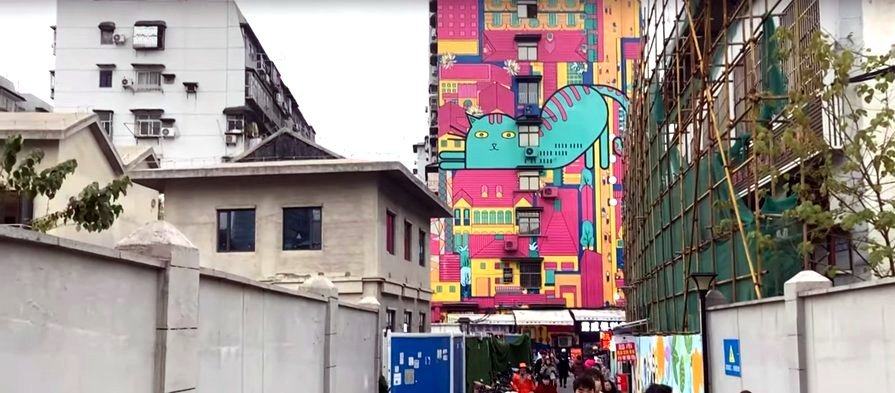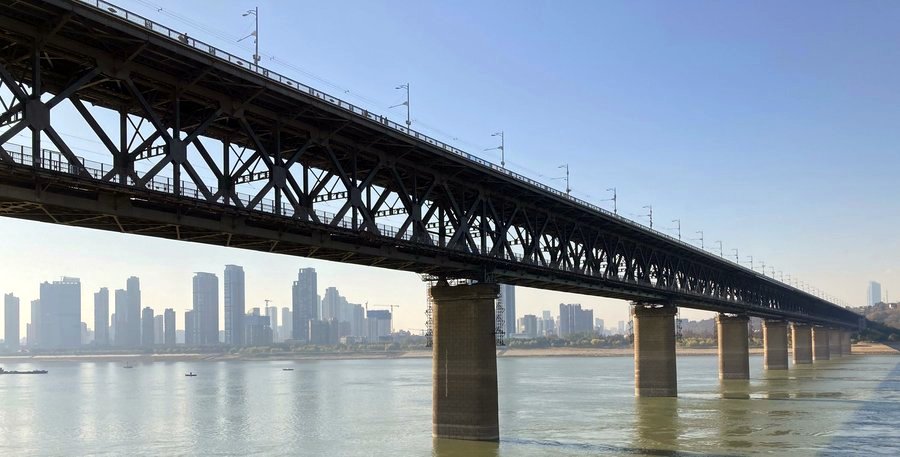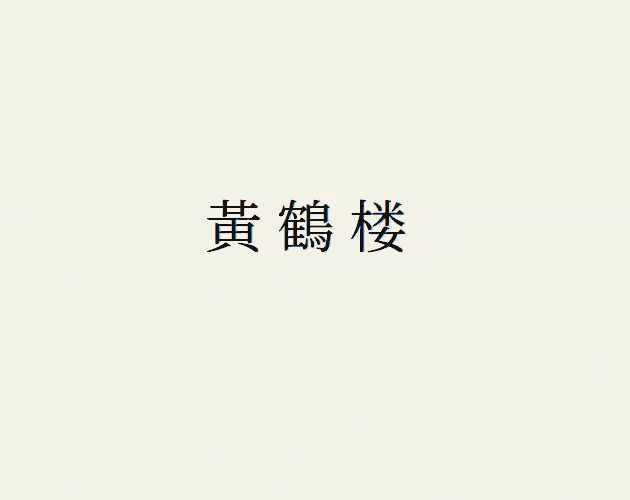黃鶴楼
Nonfiction. Similar Neo Twiny games: piele and you are an ancient chinese poet in exile.
Not an endorsement of any specific person or organization.
Contains sound.
Instructions: Click links to progress. Bold text can be clicked. Hover over yellow text or long press it on mobile to change definitions.
Credits and author's note. View after finishing.
- Dialogue box code source.
- Music source. Instrumental version of Pu Sa Man taken from a Chinese TV show.
- Photo 1 by me. Public domain.
- Photo 2 source. Public domain.
After President Nixon visited Peking last February, Chinese authorities released a photograph of greater historical interest than any other taken in “the week that changed the world.” Only hours after reaching Peking on the 21st, the President, naturally without his retinue of Western reporters and photographers, had entered the former Forbidden City for a brief conference at the real summit, that is, with Mao Tse‐tung himself, in the latter's secluded private quarters. In the Chinese photograph Mao and Nixon, with Chou En‐lai and an interpreter, are seated in homey, linen‐covered armchairs.
But almost more surprising than the grouping is the setting. Piled on tables between the seated figures, and filling the wall behind them, are books; not modern, topical books— rather, these are the handmade, block‐printed fascicles of traditional Chinese literature, some lying loose, others stacked in cloth‐covered folders with clasps of bone or ivory, and bristling with placemarks.
We are reminded that Mao, the first of the new men, is also the last of the old, more elite than the “elitists” denounced in his Great Proletarian Cultural Revolution — a Confucian scholar, a lover of ancient poetry, of medieval chronicles and novels. Somewhere outside the sanctum in the photograph — in psychological space, very far outside—is the world where faithful millions chant demotic adages from the plastic‐bound Little Red Book; where schooling in the ancient writings, suspended altogether during the Cultural Revolution, has only recently recommenced on a very limited scale; and where bookstores have scarcely begun releasing the classics again. All this while Mao, in his study, has been conning the old masterpieces— for all we know, the only unmolested classicist in China.
Mao spoke Mandarin Chinese in the rural Hunanese dialect of his hometown for his entire life. You can find videos of him speaking on Youtube, like this one. I know some Standard Mandarin, the standard dialect of Chinese, and find his dialect almost incomprehensible. The equivalent in English would be something like a heavy Appalachian accent. This is relevant to the poem: it has four couplets, but in Standard Mandarin, the first and third couplets don't rhyme. I believe they would rhyme only in Mao's Hunanese dialect. To properly translate this into English, I guess I would've had to make it so the first and third couplet only rhyme when spoken in a heavy country accent, but I don't know enough about English accents to do that. At any rate, the pool of final translations for each line draws from both rhyming versions and the non-rhyming English translations cited above.
According to this link, the poem is a tzu verse form (詞).
The tzu originated in the Tang Dynasty (A.D. 618-907) as lines sung to certain tunes. Each tune prescribes a strict tonal pattern and rhyme scheme, with a fixed number of lines of a standardized varying length. Names like Chin Yuan Chun, Pa Sa Man, etc. indicate not the themes of the respective poems but the tunes to which they are written.
tzu is the Wade-Giles romanization. The Wikipedia article calls it ci after the Pinyin, the newer romanization system for Chinese created by the mainland Chinese government. See this article about ways of romanizing Chinese. As a side note, the New York Times switched from modified Wade-Giles to Pinyin in 1979. Here's the New York Times article about it. 1979 was uncoincidentally the year "the US formally established diplomatic relations with the PRC and recognized it as the sole legitimate government of China", severing formal diplomatic relations with Taiwan, according to Wikipedia.
This project is nonfiction and comes from a trip I took to Wuhan with my family in early 2025. My parents and a lot of my extended family are from Wuhan. Unfortunately most people are only familiar with Wuhan for one specific reason, which I think is a shame. I would like to mention I enjoyed my trip and took a lot of cool photos:




Many of these photos depict the Yangtze River, one of the major rivers that runs through China, whose name in Chinese translates directly to "Long River". The Three Gorges Dam is built on this river. We would've visited the dam, but it was several hours away and we didn't have time.
Wuhan used to flood occasionally during the summers before the dam was finished. My mom told me stories about staying in the upper floors of the hospital where she worked to wait out the floodwaters.
The Yellow Crane Tower is one of Wuhan's tourist landmarks. Turtle/Tortoise Mountain and Snake Hill, from the poem, refer to two hills near the tower. The Yellow Crane Tower itself is on Snake Hill, and Turtle/Tortoise Mountain is nearby. The line about them "locking" the river refers to how they constrain the river's shape by restricting the direction the water can flow.
We couldn't actually go into the tower during my trip because it was closed off for the Spring Festival Gala, a TV programme the Chinese government puts on to celebrate the Spring Festival/Chinese New Year at the end of January. But we still took pictures of the exterior, along with all the other tourists.
The first photo in this project isn't actually from the Yellow Crane Tower, but a building whose name is 武汉市民之家/Wuhan Citizens' Home. The English name makes it sound like a retirement home or something, but it isn't. It's some kind of combination museum/civil services building for handling immigration paperwork and stuff. We took a guided tour of the museum part. They had an enormous diorama of Wuhan that took up an entire room and must have been about thirty feet wide. The tour guide pointed out specific landmarks with a laser pointer. Really cool.
The translation mechanic is based on the one from piele, but I remade it in JavaScript to support changing definitions on hover/swipe. I might publish the source code later. I might do other games about my vacation if people are interested, though it's commonly said people hate hearing about other people's vacations.
As for Mao himself, a lot has been said about him by experts and those who lived under his policies and know more about them than I do. I'm the opposite of an expert, but I recommend Mao Zedong: A Life by Jonathan D. Spence and A Social History of Maoist China by Felix Wemheuer, which I enjoyed reading. I've heard bad things about Frank Dikötter, Michael Parenti, and Mao: the Unknown Story, but don't let that stop you, I guess.
| Published | 3 days ago |
| Status | Released |
| Platforms | HTML5 |
| Rating | Rated 5.0 out of 5 stars (4 total ratings) |
| Author | PortableDocumentFormat |
| Genre | Interactive Fiction |
| Made with | Twine |
| Tags | china, poem, wuhan |
| Code license | MIT License |
| Average session | A few minutes |
| Languages | English |
| Inputs | Mouse, Touchscreen |
| Accessibility | Subtitles |

Comments
Log in with itch.io to leave a comment.
I absolutely loved this game. The layering of the translations, the slow morphing & act of creation. Incredible work.
Great work, I love the Javascript advancements you made to Piele's translation mechanic!
Thanks, the translations in that game and Verses were big inspirations.